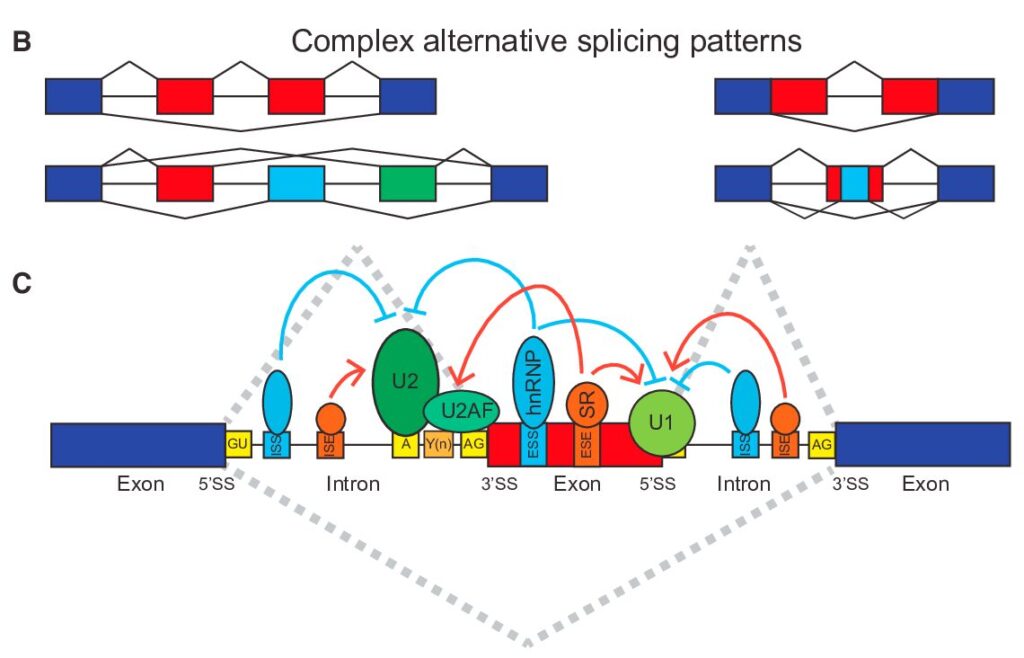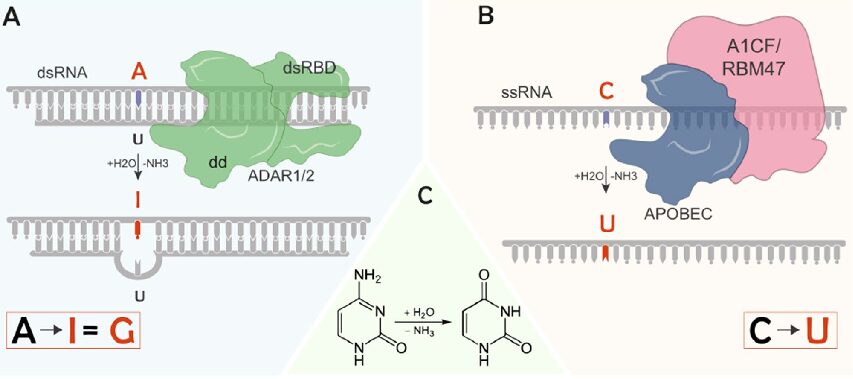Category: Transcriptomics
-

How to Analyze RNAseq Data for Absolute Beginners Part 11: Mastering Transcript-Level Alternative Splicing Analysis
Video Tutorial From Gene-Level to Transcript-Level Analysis In our previous exploration of gene-level splicing analysis, we laid the groundwork for understanding how alternative splicing shapes gene expression. Now, we’re taking a deeper dive into the fascinating world of transcript-level analysis, where we can uncover the intricate details of how genes produce different protein variants through…
//
-

How to Analyze RNAseq Data for Absolute Beginners Part 10: Isoform Analysis
Video Tutorial If you’ve followed our previous tutorials on RNA-seq analysis, you’re already familiar with gene-level analysis. But genes are far more complex than simple on/off switches – they can produce multiple versions of RNA transcripts through fascinating processes like alternative splicing. These different versions, called isoforms, allow a single gene to create multiple protein…
//
-

How to Analyze RNAseq Data for Absolute Beginners Part 9: RNA Editing Analysis
Video Tutorial RNA editing represents one of the most fascinating mechanisms in molecular biology – a process that introduces targeted changes to RNA sequences after transcription, creating a dynamic transcriptome that diverges from the genome’s blueprint. Through this tutorial, you’ll learn how to analyze RNA editing events from RNA-seq data, uncovering these crucial modifications that…
//
-

How to Analyze RNAseq Data for Absolute Beginners Part 8: Alternative Splicing Analysis
Video Tutorial Introduction The human genome harbors an elegant solution to the challenge of biological complexity. Through alternative splicing (AS), a single gene can orchestrate the production of multiple protein variants, much like a composer creating different melodies from the same set of musical notes. This remarkable mechanism serves as nature’s way of expanding our…
//
-

How to Analyze RNAseq Data for Absolute Beginners Part 7: Unlocking Cell-Type Resolution from Bulk RNA-seq Data With Deconvolution Analysis
Video Tutorial Understanding Bulk RNA-seq Deconvolution Analysis: Unraveling Cellular Complexity In the ever-evolving landscape of molecular biology, bulk RNA sequencing has emerged as a fundamental technology for understanding gene expression patterns. However, like peering through a frosted window, bulk RNA-seq provides only an averaged view of the complex cellular world within our tissues. This challenge…
//
-

How to Analyze RNAseq Data for Absolute Beginners Part 6: A Comprehensive Guide for Cancer Subtype Prediction
Meta Description: Learn how to predict cancer subtypes using RNA-seq data through practical implementations of PAM50, genefu, and GSVA methods. Perfect for bioinformaticians and computational biologists working with gene expression data. Video Tutorial Introduction Cancer subtype prediction from RNA-seq data is crucial for personalized medicine and treatment optimization. This tutorial, part 6 in our RNA-seq…
//
-

How to Analyze RNAseq Data for Absolute Beginners Part 5: From DEGs to Pathways – Best Practices
Video Tutorial Introduction After completing the data preparation, statistical testing, and visualization steps, we’re finally ready to explore the biological significance of our RNA sequencing data. As biologists, this is the moment we’ve been waiting for – but how do we make sense of the hundreds or thousands of differentially expressed genes (DEGs) we’ve identified?…
//
-

How to Analyze RNAseq Data for Absolute Beginners Part 3: From Count Table to DEGs – Best Practices
Video Tutorial As we move forward in our RNAseq analysis journey, we’ll be transitioning from the Linux environment to R, a powerful and versatile statistical analysis tool. R is not only a programming language but also a platform widely used in data science, statistical computing, and predictive modeling. Tech giants like Microsoft, Meta, Google, Amazon,…
//
-

How to Analyze RNAseq Data for Absolute Beginners Part 2: From Fastq to Counts – Best Practices
Video Tutorial Introduction The most straightforward way to obtain a count table is to request it directly from your sequencing company or your institution’s sequencing core. This option may involve an additional fee. However, for those eager to learn or save money, let’s walk through the process together. Before we dive in, a quick reminder:…
//
Search
Categories
- bulk RNA-seq (20)
- chromatin accessibility (10)
- Database (2)
- Epigenetics (10)
- HPC (2)
- Metagenomics (1)
- Scientific Programming (2)
- Transcriptomics (21)
Recent Posts
- The Complete Guide to NGS Data Types and Formats: From Raw Reads to Analysis-Ready Files
- How To Analyze CUT&RUN/Tag Data For Absolute Beginners: From FASTQ to Peaks
- How To Analyze ATAC-seq Data For Absolute Beginners Part 4: ATAC-seq and RNA-seq Integration
- How To Analyze ATAC-seq Data For Absolute Beginners Part 3: Footprinting Analysis
Tags
Adapter Trimming Alternative Splicing Analysis ATAC-seq BAM ChIP-seq chromatin accessibility Conda Environment Setting Count DESeq2 Differential Expression edgeR FASTQ gene expression Gene Expression Quantification HOMER HPC Isoform limma MACS2 miRNA miRNA-seq Normalization PCA peak calling R Reads Mapping RNAseq analysis RNAseq analysis for beginners RStudio Transcript




